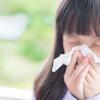 By Lynn Colwell and Corey Colwell-Lipson
By Lynn Colwell and Corey Colwell-Lipson
Halloween is big on fun, but unfortunately, it's also big on unhealthy traditions and waste. Many moms worry about the impact of this holiday on the health of their kids and the planet. And for good reason. Almost $6 billion a year is spent on costumes, candy, décor, and other accessories, most of which are made from unhealthy, unsustainable materials, and by people who may not be paid living wages or treated fairly. Most of the stuff – what isn't consumed – winds up in landfills. And scary news about high-fructose corn syrup, artificial colors, and lead-laden accessories just fuel parent's concerns.
But our goal is to show families that it's easy and affordable to keep the fun, while losing the un-Earth-friendly traditions. It's not about telling parents how they should celebrate – it's about inspiring them to make choices that make sense to their families, their budgets, and their schedules. And when many families make healthier and more sustainable choices for Halloween – taking even the smallest of steps – big impacts can be made for the short- and long-term.
Here are 10 "spooky statistics" that might fuel your desire to help change the way your family celebrates Halloween:
1. Today's trick-or-treaters have a life expectancy that is shorter than that of their parents.
2. One in three trick-or-treaters born today will develop diabetes.
3. One-third of America's trick-or-treaters are overweight; 17 percent are considered obese.
4. The EPA considers that 60% of all herbicides, 90% of all fungicides, and 30% of all insecticides found in non-organically grown food – including "goodies" – are carcinogenic.
5. Over 6,000 synthetic chemicals are used in the processed-food industry. Most Halloween "treats" are processed.
6. A 2004 study conducted with 1800 three-year-old children found that behavior measurably improved after a one week diet without preservatives and artificial colors and dramatically worsened on the weeks they were given preservatives and artificial colors (present in most Halloween candy).
7. Cocoa beans used for chocolate that are grown in full sun (as opposed to shade) are susceptible to disease and therefore require heavy doses of toxic pesticides and synthetic fertilizers.
8. The chocolate industry has engaged in the use of child slaves and other unethical treatment of growers.
9. Store-bought costumes, makeup, and accessories may contain phthalates, lead, and other toxins.
10. One test of multiple brands of face paints found detectible levels of lead in all of them. (According to experts there are NO safe levels of lead).
Lynn Colwell and Corey Colwell-Lipson are mother and daughter founders of Green Halloween and co-authors of Celebrate Green! Creating Eco-Savvy Holidays, Celebrations and Traditions for the Whole Family, available at CelebrateGreen.net.









